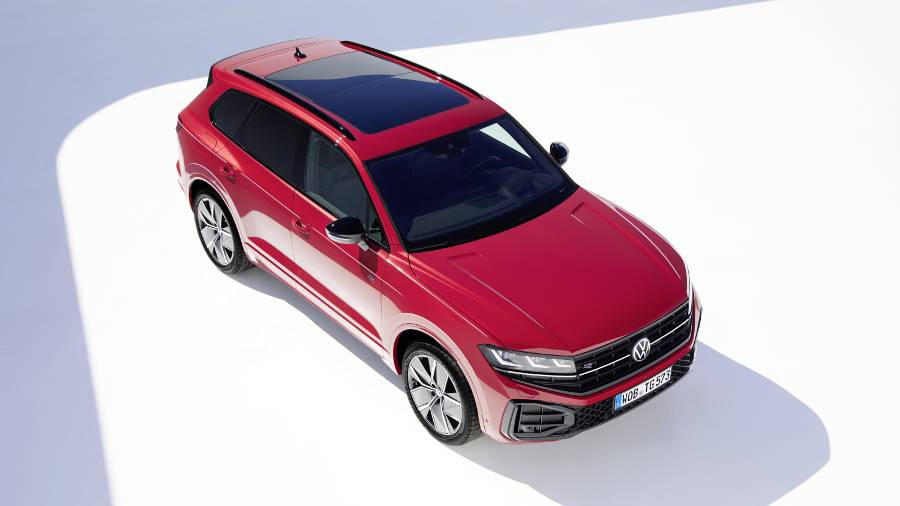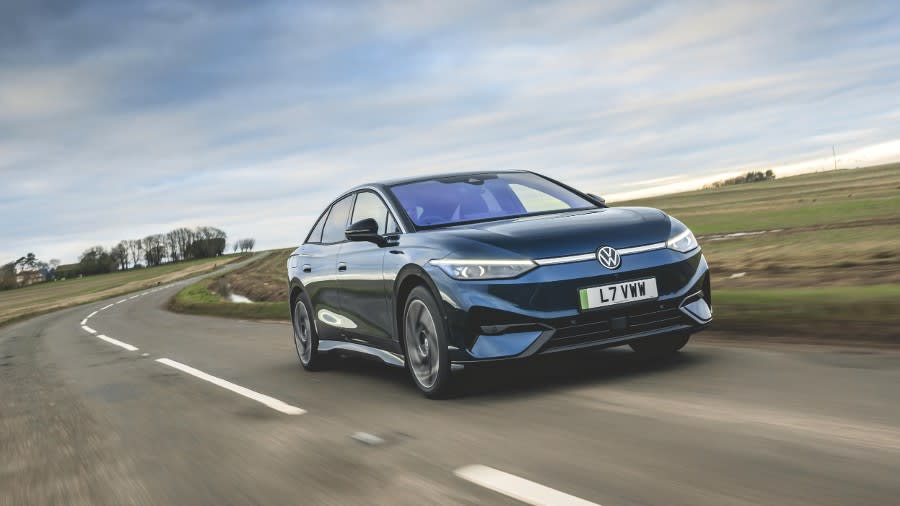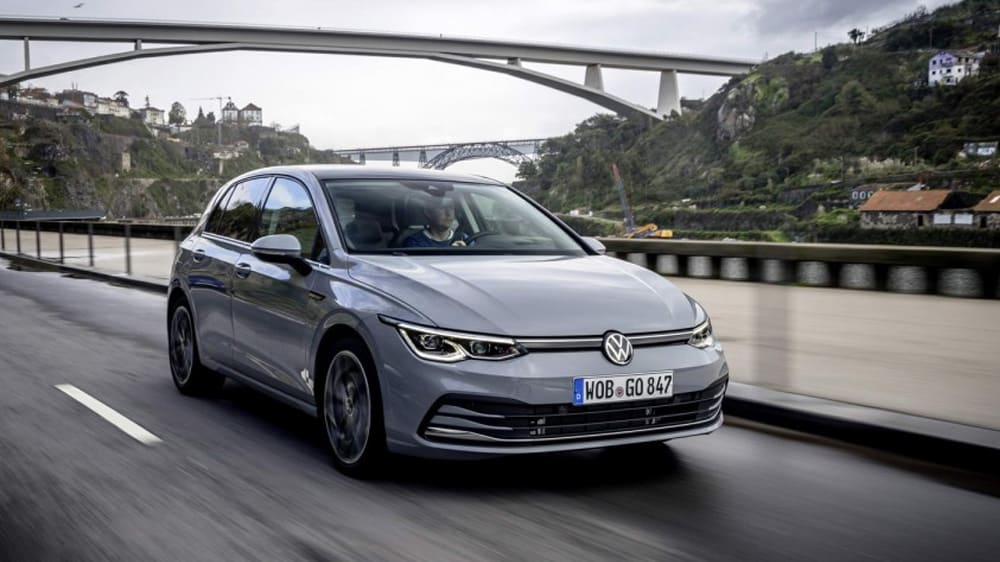
Volkswagen Golf Review

Introduction
The Volkswagen Golf has been a mainstay of the motoring world for 45 years, transcending class boundaries, offering fast or frugal options, and generally being all the car most people will ever need.
Replacing a car like that means taking few risks, and Volkswagen has definitely played it safe with this eight-generation model, but safe doesn’t have to mean boring.
But, in a world dominated by SUVs, is a smattering of gadgets and incremental improvements enough to keep the Golf at the top of its class?
Review Sections
Select's rating score* - 4.2 / 5
At a Glance
At first glance, you might not think much has changed with the new Golf, but there’s been quite a lot going on that isn’t immediately apparent.The exterior remains identifiably that of a Golf, harking back to previous models with details such as the kin in the rear pillar, but being absolutely cutting-edge at the same time. The LED headlights mark out the new generation Golf as being bang up to date, but it’s the digital interior that will surprise, and possibly bamboozle, buyers.
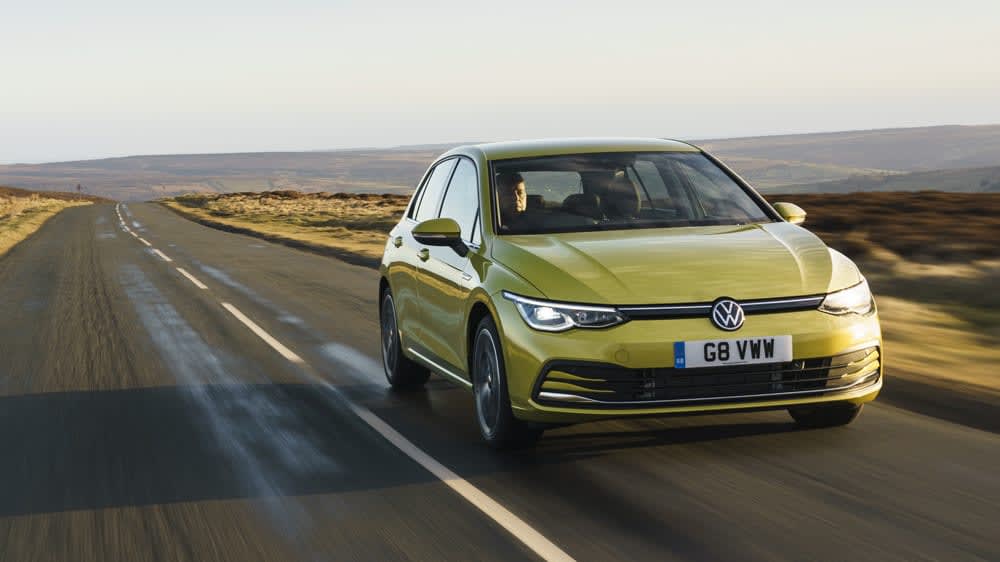
A focus on technology promises to make living with the Golf easier, with voice control and touch panels taking centre stage, but Volkswagen hasn’t forgotten what a Golf is all about - offering classless, predictable and affordable transport for your family.
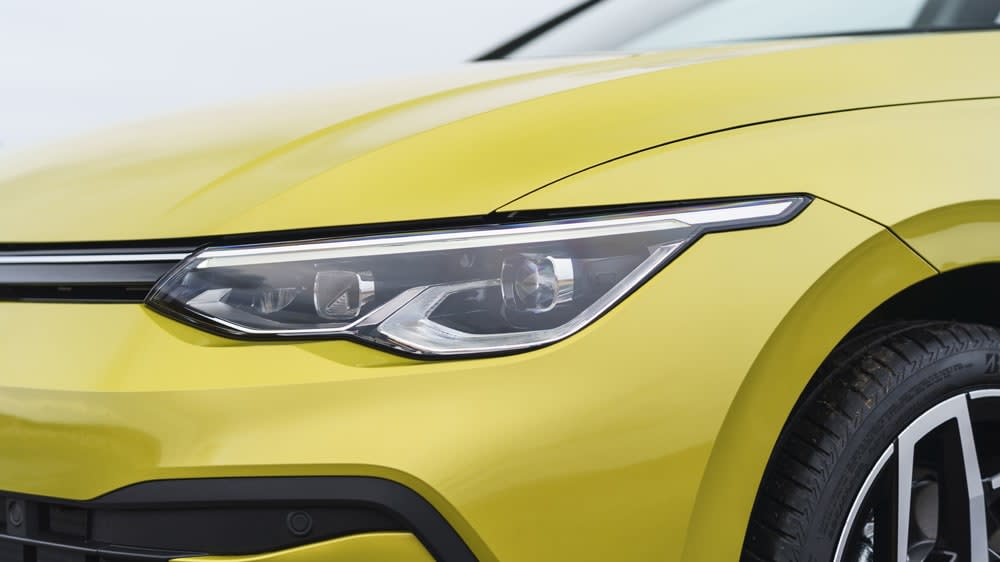
Three trim levels are available from the outset, confusingly named Life, Style and R-Line, with each more luxurious than the last. The entry-level model doesn’t suffer though, coming well equipped and loaded with tech.
The headline-grabbing GTI will follow later in the year, but there's one notable omission - there’s no electric e-Golf coming, with Volkswagen pointing potential buyers towards its ID.3 model instead.
Key Features
You’ll find a lot of high-tech goodies dotted around the new Golf, much of which you wouldn’t expect to find in a regular hatchback. Normally the preserve of more expensive models, there’s LED headlights, adjustable ambient lighting in the cabin, and a head-up display to allow you to keep your eyes on the road.
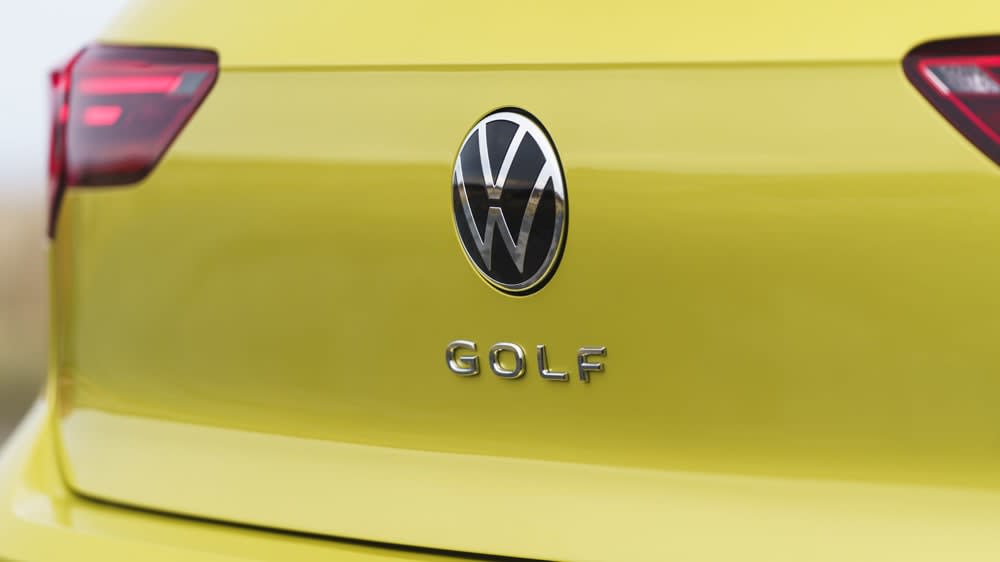
It’s all wrapped up in a digital cabin that eschews buttons in place of touch-sensitive panels and sliders, and a push towards voice control. The most obvious part is the Innovision digital instrument panel fitted to every model in the range. A 10-inch screen sits where the traditional dials would normally be, with customisable displays that can cover anything from simple speed readouts to detailed navigation and driving data. That's accompanied by another 10-inch screen in the centre stack that allows operation of virtually every part of the car, from changing those ambient lights to setting the climate control.
Even the sunroof, where fitted, is operated by a touch-sensitive slider panel, allowing you to ‘wave’ the roof open or closed.
Even then, most items can be controlled by saying “Hello Volkswagen” into thin air. The car is always listening, and will respond to regular voice commands. There's no need to learn computer speak as natural English does the trick, such as “Go to Cambridge” or even something vague like “I’m cold.” One command will set the navigation, while the other will turn up the heating. Impressively, it will only do this for the person asking, leaving anybody else who’s comfortable at the same temperature.
As the likes of Google Assistant and Alexa become more commonplace, talking to your car will seem entirely natural. Time will tell if Volkswagen’s efforts work as well as those from tech behemoths Google and Amazon.
Performance & Drive
There’s a slightly confusing array of engine options in the new Golf, with a 1.5-litre petrol engine available in either 130hp or 150hp outputs. However, it’s also available as a 48V mild-hybrid with, well, 150hp and slightly higher emissions. The latter is currently the only way to get an automatic gearbox - a seven-speed DSG semi-auto in this case - and comes with a special starter-generator and a lithium-ion battery to aid efficiency.
With or without the eco-friendly bits, the 1.5-litre petrol engine is a lovely unit. You can sprint from a standstill to 62mph in just 8.5 seconds, which is surprisingly sprightly, and it feels like it will continue pulling well beyond legal speeds in the UK. It does that while remaining smooth and quiet, and pleasingly vibration-free.
Long-distance rivers might want to look at the diesel options, which consist of a 2.0-litre engine producing 115hp in the entry-level model, or the option of a 150hp version with an automatic gearbox in higher-spec cars. We’d definitely go for the auto, especially with the diesel, as the manual gearbox is a little clunky and, while the auto isn’t the fastest-changing model you’ll ever find, it’s smooth and generally selects the right ratio.
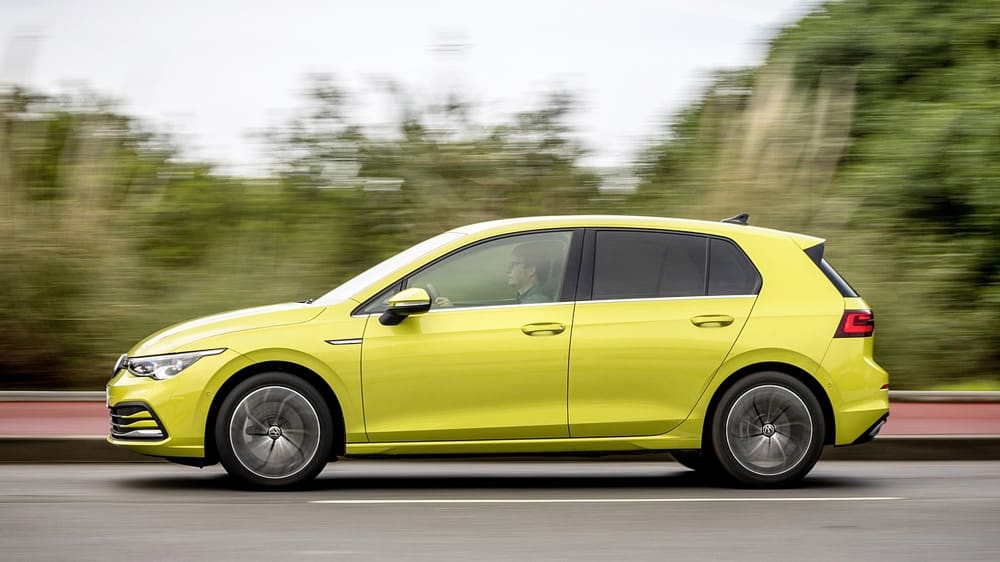
All models are front-wheel-drive and can carry you round a corner with more verve than you might expect. In standard forms, the new Golf won’t set any pulses racing too fast, but there’s a very good chassis underneath that won’t tell you off for being a little enthusiastic at times. Specify the optional adaptive suspension (called Dynamic Chassis Control by Volkswagen) and you get a car that is extremely comfortable when cruising along but, with the push of a button, stiffens up and becomes a far more serious proposition.
It all bodes well for the forthcoming GTI model, which will receive a 2.0-litre engine and around 245hp. A 245hp plugin hybrid will also follow later in the year, as well as a 200hp diesel-powered GTD.
Running Costs
Fuel economy for the latest Volkswagen Golf is generally impressive, with some models promising almost 70mpg. Even the thirstiest model, the 1.5-litre eTSI R-Line on the larger optional wheels, has an official economy figure of 45.6mpg.
Diesel models are the way to go for outright economy, with 60mpg being easily achievable, but that needs to be balanced with a higher BIK rate for company car drivers, and a higher list price for all. During testing across some mountains, along motorways, and through urban areas, our diesel test car returned 51mpg, despite my heavy right foot.
Unusually, opting for the mild-hybrid technology doesn’t affect the official economy figures by any significant degree, although you might well notice an improvement in real-world driving.
Insurance costs should also be reasonable, thanks to the range falling into groups 14-23. However, don’t expect the forthcoming GTI models to be quite so easy to insure.
The Golf is backed by a three-year unlimited mileage warranty, with fixed-price service deals available at an extra cost. For the first few years then, expenses should be easy to predict.
Emissions
Emissions range from 108 to 135g/km of CO2, which results in a narrow range of BIK burdens. Company car users will be drawn to the 130hp engine options, with CO2 emissions of 122-125 g/km, depending on how high up the range you go. Emissions on the diesel options are lower, but the 3% uplift on BIK means you’ll be looking at at least a 28% rate.
Private buyers won’t see any significant benefits, regardless of the choice between petrol, mild-hybrid petrol or diesel, although the mild-hybrid does get a token £10 discount on the annual vehicle excise duty bill.
The forthcoming plugin hybrid promises an electric range of 37 miles, which drops the BIK rate to just 10%, making a company car tax bill significantly cheaper.
Interior
Volkswagens claim of a digital revolution might be a little on the grandiose side, but there are more visible screen and touchpanels than you’ll find in anything this side of Honda’s funky little e.
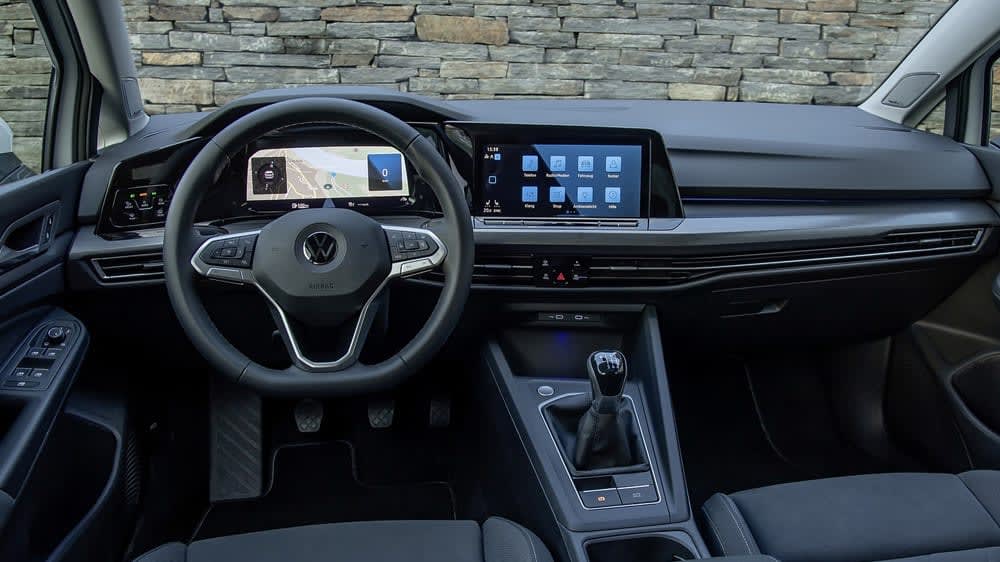
Despite the high-tech overlaod, the design is pretty conventional, and won’t upset any existing owners. Materials choices can be a little hit and miss, with some fake metals jarring a little, but the overall effect is of a simple cabin rather than an overly luxurious or stylish design.
Volkswagen has focussed on touchpoints though, so anything you pod, poke or pull should feel solid, with a certain quality to it. Comfortable seats and a perfectly sized steering wheel combine with the cabin ambience to make you feel almost at one with the car.
Only having to hunt out the particular touchpanel button for each function will break the relaxed vibe, especially as you accidentally rub your palm across an entirely different button.
Technology
Volkswagen has decided to include a decent infotainment system on every model, even the entry-level Life specification. It’s operated through a 10-inch touchscreen that is crisp, clear and reacts reasonably well. It’s not always obvious where meu functions reside, which can lead to some unnecessary hunting, but once you’ve lived with it for a while, you’ll be fine.
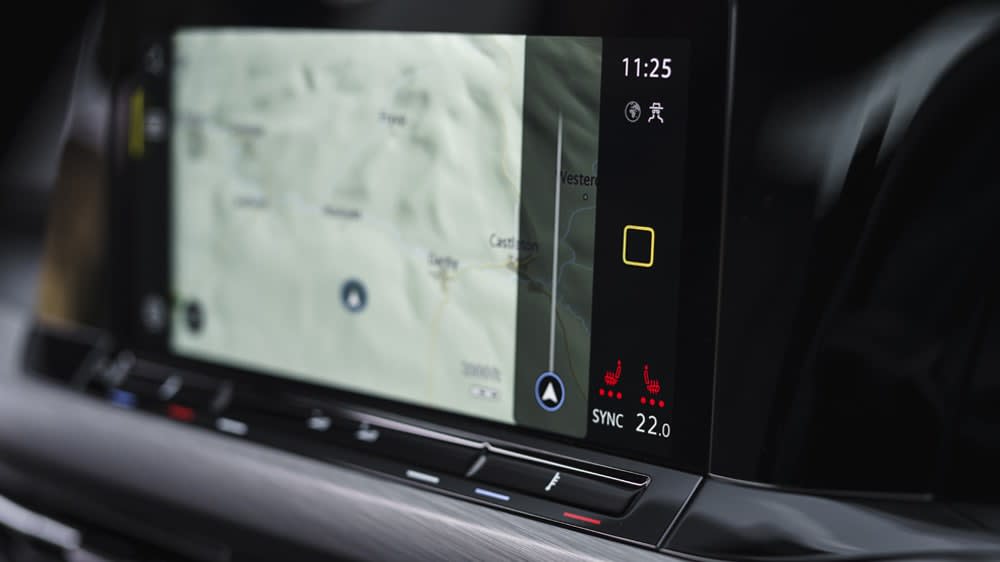
There’s a wireless smartphone charging pad in the front, along with some USB-C sockets, so you can connect a phone to stream music via a wire, Bluetooth or using Android Auto or Apple CarPlay. Those in the rear also get a pair of USB-C sockets to keep their devices charged.
A head-up display is a £625 option across the range, which projects driving information, including the current speed, onto the windscreen within the driver’s field of vision.
Those unhappy with the 4x 20-watt, six-speaker sound system can upgrade to a Harman Kardon system that brings with it a 12-channel amplifier, nine speakers and a subwoofer.
Practicality & Boot Space
At just under 3cm longer than the outgoing model, Volkswagen isn’t playing around with its winning formula too much. The wheelbase is slightly longer, which means there’s a little more room inside, but you’d need a measuring tape to notice it.
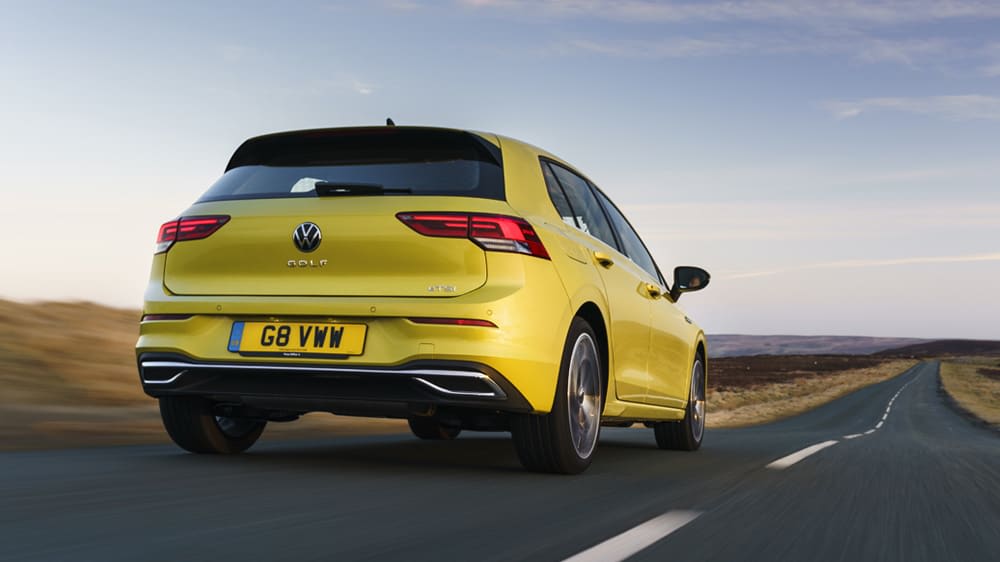
Fortunately, there was never much wrong with the space inside the Golf anyway, so you’ll continue to get plenty of space up front, and room for two adults in the rear. You could squeeze a fifth in, but you wouldn’t want the journey to be very long as they’ll have to contend with a raised hump in the seat as well as a lack of space for their feet thanks to the rear air vents and USB ports.
While you can’t fit three child seats in the back, there are Isofix connections for two, and a third seat can be fitted to the front passenger seat if necessary.
The boot remains as before, which means there’s 380-litres of capacity for your family detritus. That’s ever so slightly larger than the Ford Focus boot, but ever so slightly smaller than the boot in the Kia Ceed.
You’ll also find plenty of cubby holes around the cabin, including a decent double-height space under the centre armrest. Disappointingly, while automatic models have the gear lever replaced with a simple switch, that space-saving change hasn’t freed up any extra storage between the front seats.
Safety
The full five-stars were awarded to the Volkswagen Golf when Euro NCAP ran it through its crash safety testing, with one of the highest scores the organisation has seen. Protection for adult occupants was near-universal, while child passengers fare exceptionally well.
That score comes about thanks to a long roster of standard safety equipment, with the entry-level model having radar assistance that will detect issues and perform automatic emergency braking in urban conditions. Road sign display and predictive pedestrian detection also help to avoid an accident but, should the worst happen there’s an active bonnet that pops up to keep a pedestrians head away from the engine and automatic post-collision braking. There are front, side and curtain airbags to protect occupants, too.
A rear-view camera is optional however, while blond spot protection is optional on the Life and R-Line grades.
Options
Even the entry-level Life model comes loaded with equipment, including essentials such as satellite navigation, a DAB radio, Android Auto and Apple CarPlay, and even a wireless charging pad for your phone.
Stepping up to the Style grade adds a few cosmetic touches, including larger alloy wheels, some LED highlighting and some body-coloured fins in the lower grille. Inside there are some brushed metal inserts to add a little premium ambience, and extra lighting options. Electrically adjustable and heated door mirrors, semi-autonomous cruise control and automatic main beam assist are the biggest changes, though.
The R-Line follows much the same path, but extends the cosmetic upgrades to some darker trim, an external styling pack with sportier bumpers and side skirts, tinted windows and some sports seats with integrated head restraints. It looks sharper, certainly, and there’s more direct steering to make it feel sportier, but it doesn’t really add anything essential.
That’s left to the options list, where LED matrix headlights are optional across all models and, while they’re undoubtedly expensive, starting from £875, they’re a huge step forward when driving at night. Audiophiles will want to upgrade the standard sound system to a Harmon Kardon system, with 12-channel amplifier and 480 watts output, but all models come with a digital radio and Bluetooth connectivity for streaming music from your phone.
The Winter Pack is an essential option - you won’t know how you lived without it until you’ve got it. This includes heated seats and steering wheel, as well as heated washer jets. At £550 it’s expensive, but you’ll thank me on a cold winter’s morning. Enthusiastic drivers might want to look at the Dynamic Chassis Control option that adds adjustable suspension to the mix.
If you don’t want to pay for paint, then you can have the car in a dull grey. Even white costs extra, at £375, while metallic options run out at £625. The very style-conscious could order the car in Oryx White, a Premium Signature colour, but that adds an astonishing £1,040 to the price.
Rival Cars
Volkswagen’s strongest rival for the Golf actually comes from within the Volkswagen Group, and that’s the Skoda Octavia. Also a brand new model, most of the mechanical bits are shared between the two cars, but the Octavia is significantly larger. The result is more room inside and a simply enormous boot, but you do sacrifice a little bit of material quality and some of the high-tech features.
Elsewhere, the Ford Focus offers much the same in terms of space and practicality but lacks the latest high-tech gadgets that dominate the Golf’s interior. It definitely edges out the German car when it comes to handling though, making the Focus a strong choice for enthusiastic drivers.
The BMW 1 Series will attract those wanting an even more premium experience, and it’s a reasonably sensible alternative to the Golf. Beware though; while headline prices and leasing rates are competitive, the options list can soon have the costs rising exponentially.
Worthy of consideration is the latest Kia Ceed, and especially its pseudo-rugged XCeed variant. Excellent ride quality combined with high levels of equipment, good space and a seven-year warranty to create one of the most complete and sensible options in the market.
Verdict & Next Steps
Volkswagen can’t afford to make any mistakes with the Golf, as alienating its existing owners will have a direct impact on sales. While it's gone for a slightly bolder than usual digital interior, the rest of the car is as conventional as ever, and all the better for it.
With dimensions that haven’t grown by more than the odd millimetre, it'll fit in every garage. Interior room, already good, has grown slightly to be a little more comfortable. Practicality has seen a small step forward. Even the economy and driving performance has got just that little bit better.
If that sounds like it's being damned with faint praise, then banish that thought. The Golf is as complete a car that you could find. Yes, there are flaws, but they’re few and far between and, frankly, are unlikely to be significant enough to strike the car from consideration.
It remains, as ever, a car suited to everybody, at the risk of exciting nobody. For a huge amount of motorists, that’s perfect.
Lease price: from £199.99**
Read more on the best Hatchback lease options: Take a look at our 2020 Ford Focus Review or our Mini Hatchback Review.
*Score based on Select’s unique meta score analysis, taking into account the UK’s top six leading independent car website reviews of the Volkswagen Golf.
**Correct as of 14/10/2020. Based on 9 months initial payment, 5,000 miles over a 24 month lease. Initial payment equivalent to 9 monthly payments or £1,799.93. Ts and Cs apply. Credit is subject to status.
